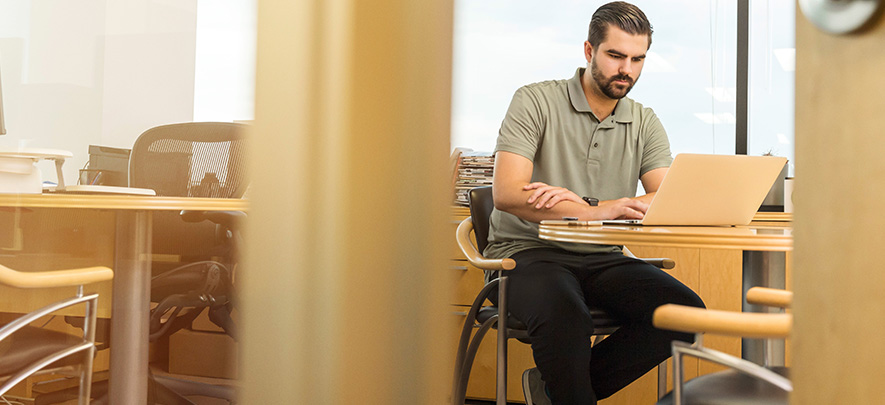Knee pain and how to remedy it

Health & Lifestyle
366 week ago — 7 min read
SMEs and professionals are easily susceptible to knee pain given the increasingly sedentary nature of working life. Hours on end are spent sitting on computers and at desks mean that their bodies do not get the required amount of exercise needed to keep its machinery, the joints ‘oiled’ and healthy. Knee pain is a common complaint of SMEs and professionals. It creeps up slowly, but when it sits in, it becomes a fixture of life.It is crucial to understand its causes, nd find ways of remedying the situation if it begins to pose a problem and affect daily functioning.
Knee pain is a common problem that can originate in any of the bony structures compromising the knee joint (femur, tibia, fibula), the kneecap (patella), or the ligaments and cartilage (meniscus) of the knee. Knee pain can be aggravated by exercise, affected by the surrounding muscles and their movements, and be triggered by other problems (such as a foot injury).
What causes knee pain?
Knee pain can be divided into three major categories:
-
Acute injury: such as a broken bone, torn ligament, or meniscal tear
-
Medical conditions: arthritis, infections, deformities
-
Chronic use/overuse conditions: osteoarthritis, patellar syndromes, tendinitis, and bursitis
Acute knee injuries
Fractures: Direct trauma to the bony structure can cause one of the bones in the knee to break or it can cause edema of the bone called as ‘bone contusion’. This is usually a very obvious and painful knee injury. Most knee fractures are not only painful but will also interfere with the proper functioning of the knee (such as kneecap fracture) or make it very painful to bear weight (such as tibial plateau fracture). All fractures need immediate medical attention. Many fractures require significant force, and a thorough examination is performed to detect other injuries.
Ligament injuries: The most common injury is the ACL (anterior cruciate ligament) injury. This is often a sports-related injury due to a sudden stop and change in directions. The remaining ligaments (posterior cruciate ligament, lateral collateral ligament, and medial collateral ligament) are injured less frequently.
Meniscus injuries: The menisci (medial and lateral) are made of cartilage and act as shock absorbers between bones in the knee. Twisting the knee can injure the meniscus which can also cause knee pain.
Dislocation: The knee joint can be dislocated, which is a medical emergency that requires immediate attention. Knee dislocation can compromise blood flow to the leg and have other related problems. This injury often occurs during a motor-vehicle accident when the knee hits the dashboard.
Medical conditions:
Physical conditions or diseases can cause knee pain. These include:
-
osteoarthritis: pain, inflammation and joint destruction caused by degeneration of cartilage.
-
tendinitis: pain in the front of the knee that is made worse when climbing, taking stairs, or walking up an incline
-
bursitis: inflammation caused by repeated overuse or injury of the knee
-
chondromalacia patella: damaged cartilage under the kneecap
-
Baker’s cyst: a buildup of synovial fluid (fluid that lubricates the joint) behind the knee.
-
rheumatoid arthritis (RA): a chronic autoimmune inflammatory disorder that causes painful swelling and can eventually cause joint deformity and bone erosion.
-
Septic arthritis (infectious arthritis), the knee joint can become infected; this leads to pain, swelling, and fever. This condition requires antibiotics and drainage treatments as soon as possible.
-
bone tumors: osteosarcoma (second most prevalent bone cancer), most commonly occurs around the knee.
Temporary knee pain is different from chronic knee pain. Many people experience temporary knee pain as a result of an injury or accident.
Chronic knee pain:
Chronic knee pain rarely goes away without treatment, and it isn’t always attributable to one incident. It’s most often the result of several causes or conditions.
Tips for Avoiding Knee Injuries
You can avoid knee pain and injuries by doing the following:
-
Maintain your weight. Extra weight can increase your chances of getting knee pain due to osteoarthritis. Maintain a weight that's appropriate for your size and age to decrease stress on your knees and to avoid increased chances for knee injuries.
-
Warm up. Before starting any exercise or a game, its always best to warm up and then do your stretches to minimize your risk of injuring your knee. Stretching muscles in the front and back of your thighs, decreases tension on your tendons, ultimately relieving pressure on the knees.
Hamstring stretch
-
Do low-impact exercise. At the gym, opt for a rowing machine or a cross-country skiing machine. Both offer a strong workout with low impact to your knees.
-
Footwear. Wear sensible shoes with a good fit. It will help you to maintain proper leg alignment and balance, ultimately preventing knee injuries. Replace running shoes every 300 to 500 miles (480 to 800 kilometers). Experts recommend getting new athletic shoes every 3 months or after 500 miles of wear.
-
Swim or walk. When exercising outside of the gym, opt for swimming or walking.
-
Weight train. Strengthen your leg muscles to better support your knees and avoid injuries by working out with weights. But be sure to consult with an expert first on the right way to life weights to prevent knee pain.
-
Don't suddenly change the intensity of your exercise. Build up gradually to avoid knee pain.
Visiting a doctor. If you already have a knee injury, visit a orthopaedician, for appropriate treatment.
To explore business opportunities, link with me by clicking on the 'Invite' button on my eBiz Card.
Disclaimer: The views and opinions expressed in this article are those of the author and do not necessarily reflect the views, official policy or position of GlobalLinker.
Posted by
Lokesh KumarI am looking to connect with patients needing expert orthopaedic opinion and professional medical help and consultation. Invite me to connect
View Lokesh 's profile
Other articles written by Lokesh Kumar
371 week ago
Most read this week
Trending
Ecommerce 4 days ago











Comments
Share this content
Please login or Register to join the discussion